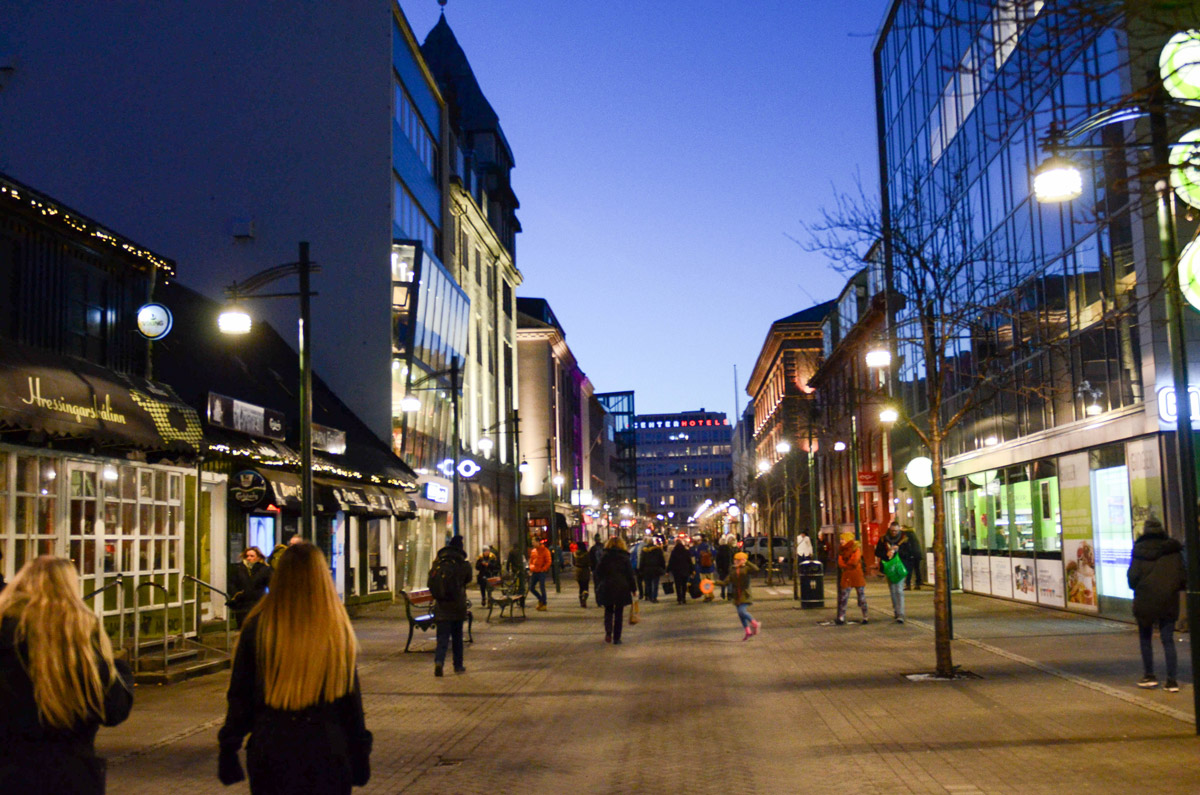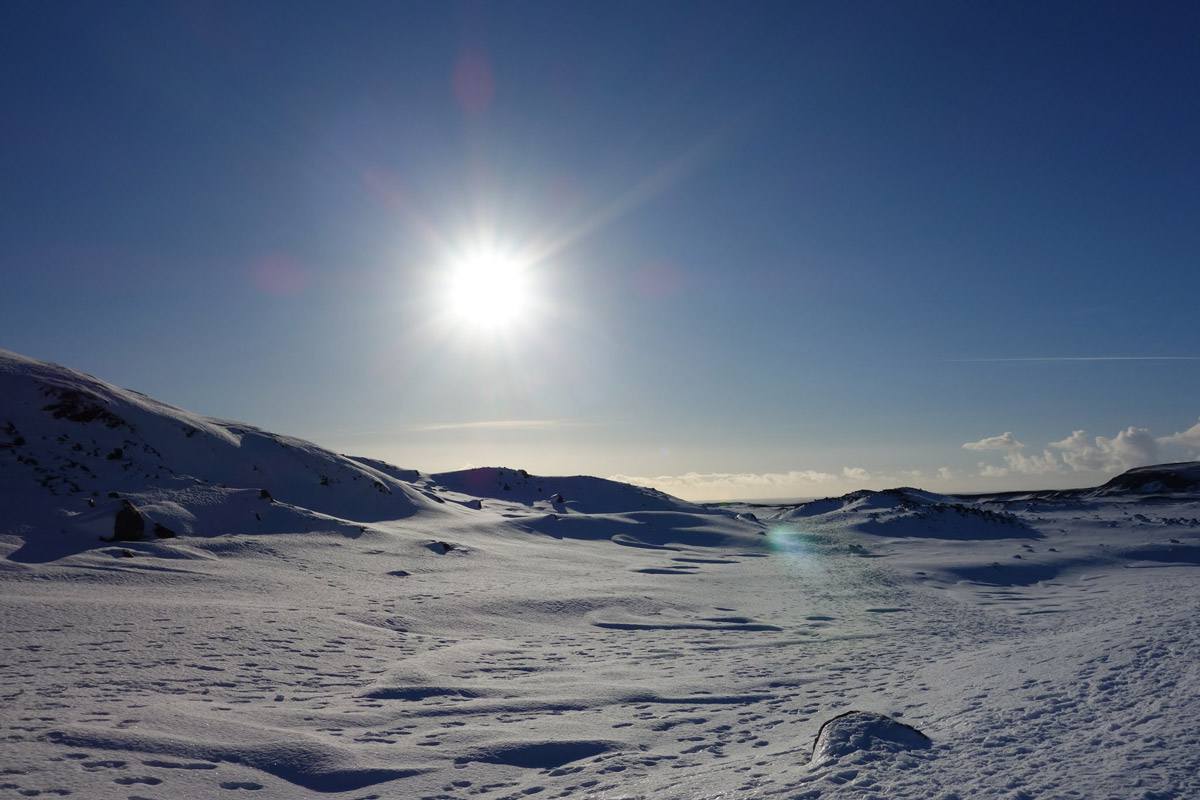For Vassar’s Jill Schneiderman, Professor of Earth Science, traveling to Iceland had long been a dream. “As a geologist, I’m drawn to any place where the earth is growing, melting, moving,” she says. Iceland, which straddles the Mid-Atlantic Ridge, fits the bill. Volcanoes, geysers, glaciers, and hot springs abound, making the land a living laboratory for geology.
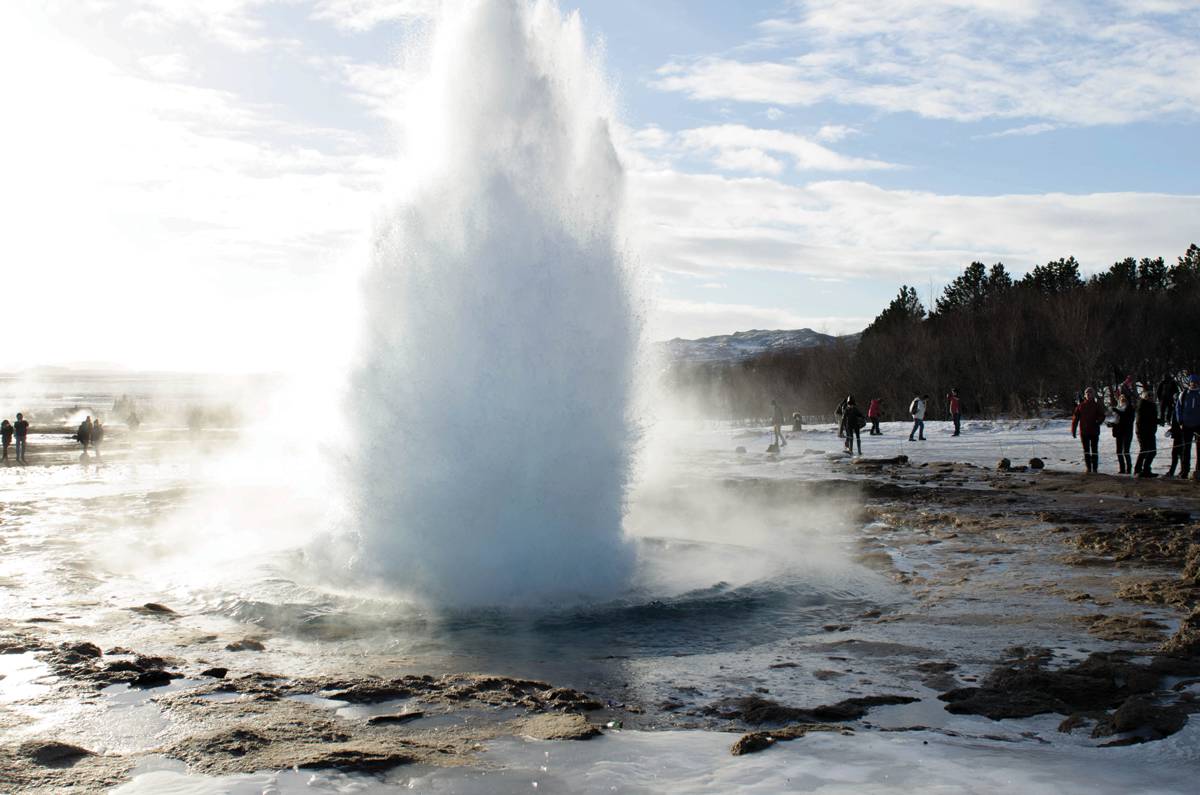
So when Susan Quade, Senior Associate Director for Alumnae/i Education and Affinity Programs, approached Schneiderman about leading an expedition to Iceland over Valentine’s Day weekend, she swiftly hopped on board. “Iceland is like nowhere else in the world,” says Quade, who organizes all of Vassar’s alumnae/i travel programs. This year marks the third consecutive year she’s planned a trip to Iceland.
The trip sold out rapidly, and on February 11, 27 people—with Vassar as their common bond—boarded a plane to Europe’s more remote country.
“We arrived at 6:00 am and started touring then and there,” says Daniel Levine ’83. Before getting to their hotel, the group was already walking down the streets of Reykjavík, Iceland’s capital and only city. At the water’s edge reared a modernist sculpture of a longship; Vikings were the first people to settle Iceland, landing in what is now Reykjavík—the name means “Bay of Smoke”—in 874 CE.
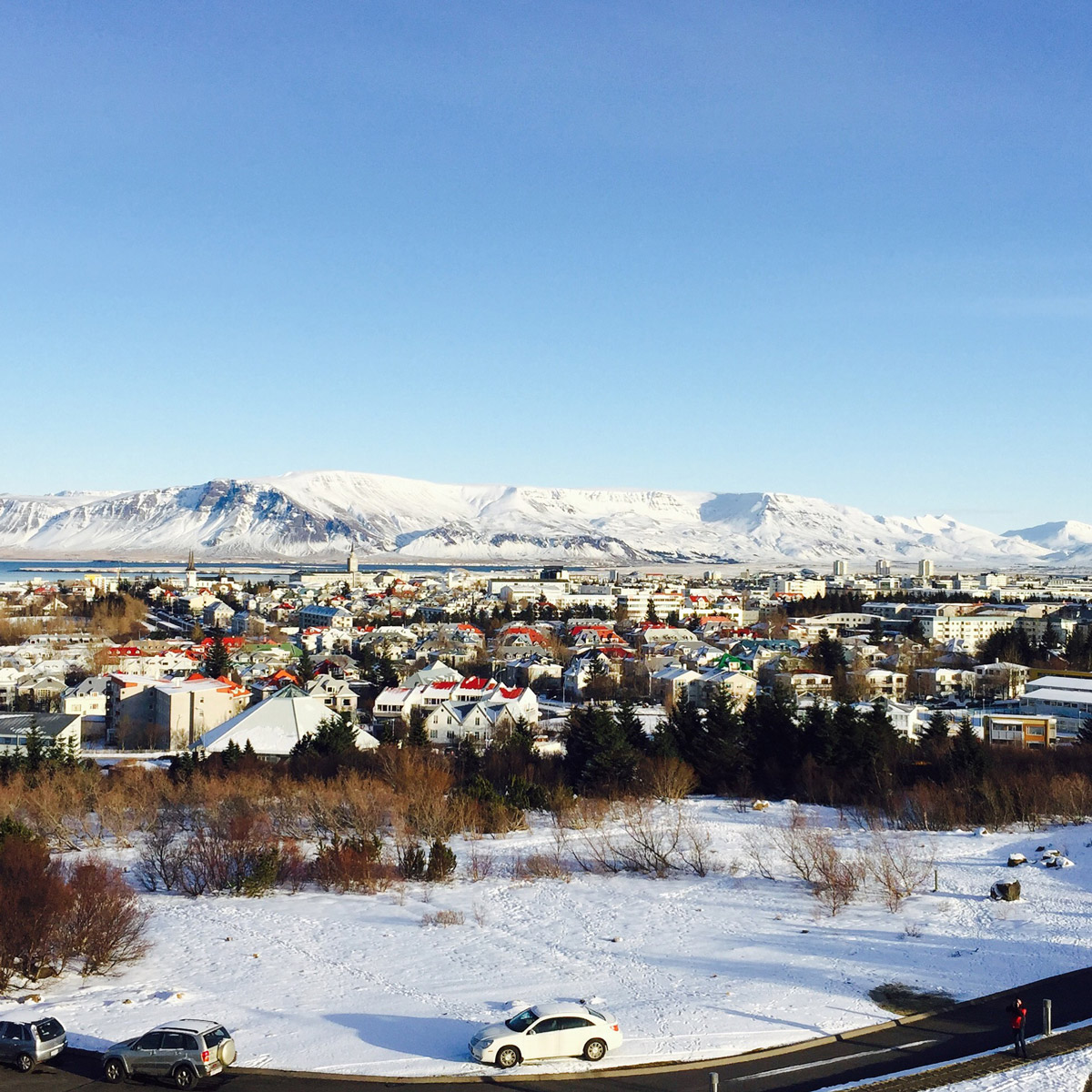
Later, the Vassar crew visited Höfði House, the site of Ronald Reagan’s and Mikhail Gorbachev’s 1986 summit, and passed by the Althingi, Iceland’s parliament. Icelanders, Schneiderman noted in a lecture that evening, have a novel approach to living on a continental divide; they tap the ground for geothermal energy and relax in hot springs on the weekends.
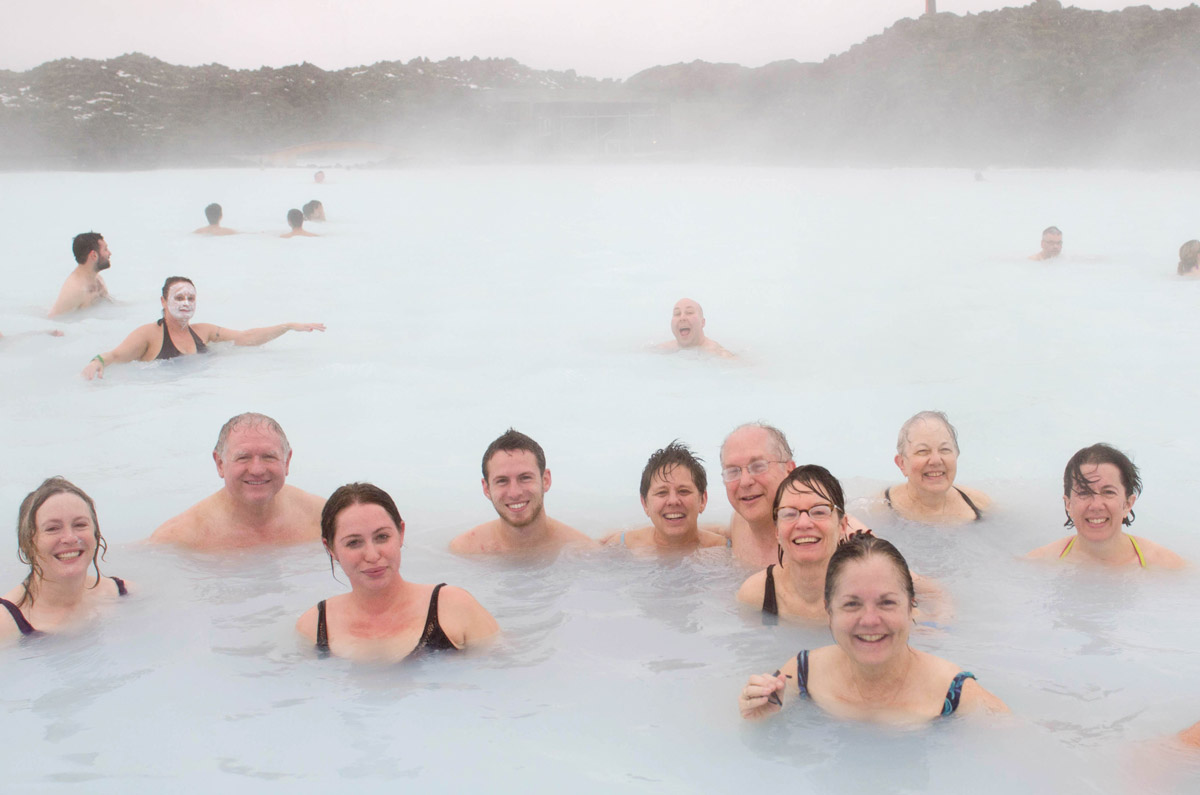
The next day, the group visited Thingvellir National Park, whose rocky cliffs literally split the earth in two. “It’s the only place in the world where a mid-oceanic ridge peaks up above sea level,” says Schneiderman. Thingvellir turned out to be both geologically and historically important, as Icelandic chieftains met there for centuries to maintain law and order.
“I can imagine Jill in her classroom talking about geology,” says Richard Cohen ’75, “but she’s out here, and we’re looking at the real thing. Only Jill could bring us to tears describing rock formations.”
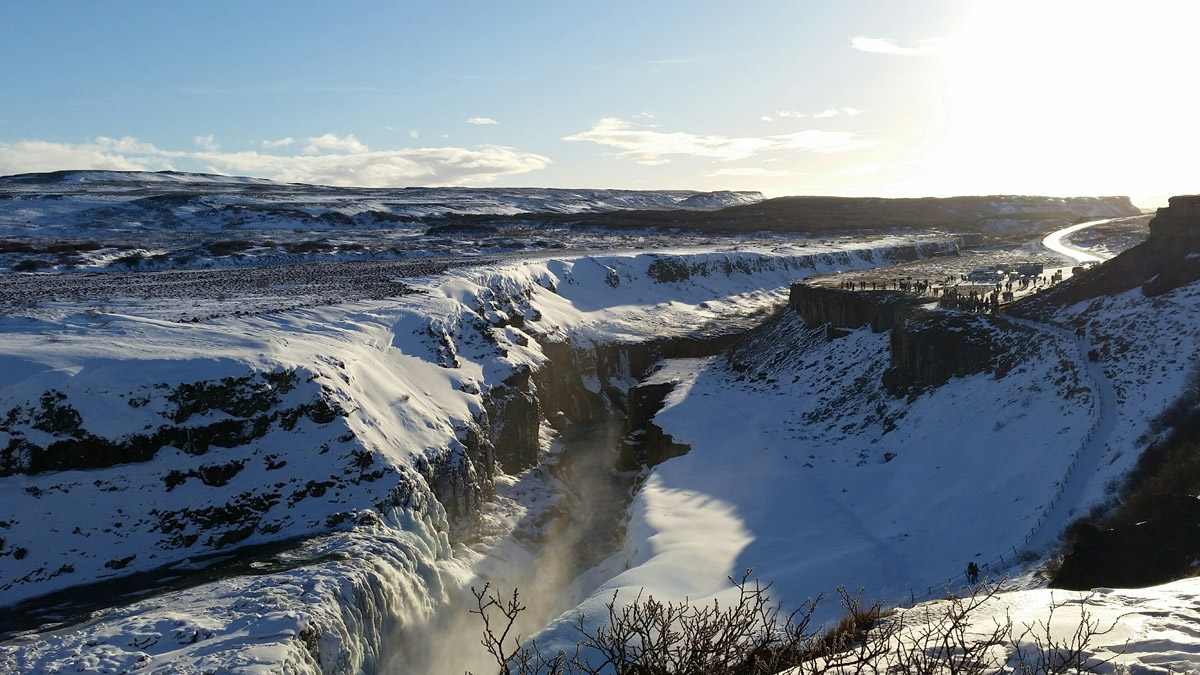
From Thingvellir the group traveled southeast to the notoriously impossible-to-pronounce Eyjafjallajökull volcano, whose 2010 eruption grounded flights across the Northern Hemisphere; then they climbed the Kerið crater.
Though few people ambled very far along the crater, Cohen was feeling adventurous. “The wind was howling, it was freezing, but you’re out in the middle of the land,” he says. “It was stunning.”
“The wind was howling, it was freezing, but you’re out in the middle of the land….It was stunning.”
In the town of Vík, Vassar alumnae/i wandered down to a black-sand beach where basalt columns, shining and dark, crowned the headland. There, it seemed of little wonder that Icelanders still speak of elves and trolls. “I’m not someone drawn to geology, but it was truly fascinating,” says Levine.
The group also visited glaciers, which Schneiderman calls “disappearing creatures.” (Due to climate change, Iceland’s glaciers are expected to vanish within one to two centuries.) It was a once-in-a-lifetime chance not only to see but to ascend a glacier, which the group undertook eagerly. For some it was a spiritual experience. “I was with Jill,” Cohen says, “and we were standing on the tip of the glacier, looking out at the majesty of the creation of the earth.”
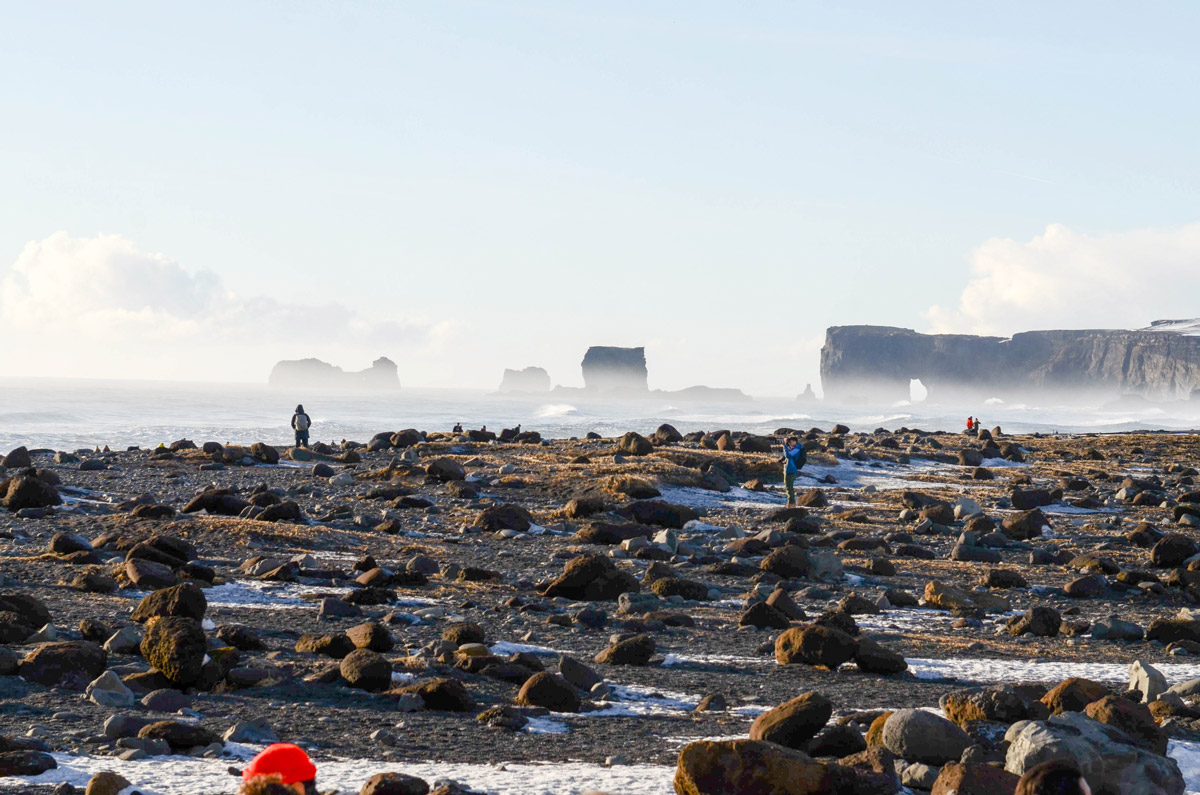
One night, the group met Guðný Guðbjörnsdóttir and Guðný Eiríksdóttir, both members of the class of 1971 and the only Icelandic Vassar graduates. Over a lobster dinner, the Guðnýs relayed their Vassar story: despite sharing a name and a home country, they hadn’t known each other until they reached Poughkeepsie. Small-world encounters are the norm in Iceland, which, with a population of 320,000, is roughly half the size of Nashville, TN. In fact, the Guðnýs confided, the population is so homogenous that a mobile app—frequently employed at bars—warns you how closely related you are to your prospective lover.
Every night, the Vassar crew went hunting for the Northern Lights. “We finally got a glimpse of them on the last night,” says Levine. It was the moment they’d all been waiting for—the world around them damp and dark, then, green colors flashing across the sky.
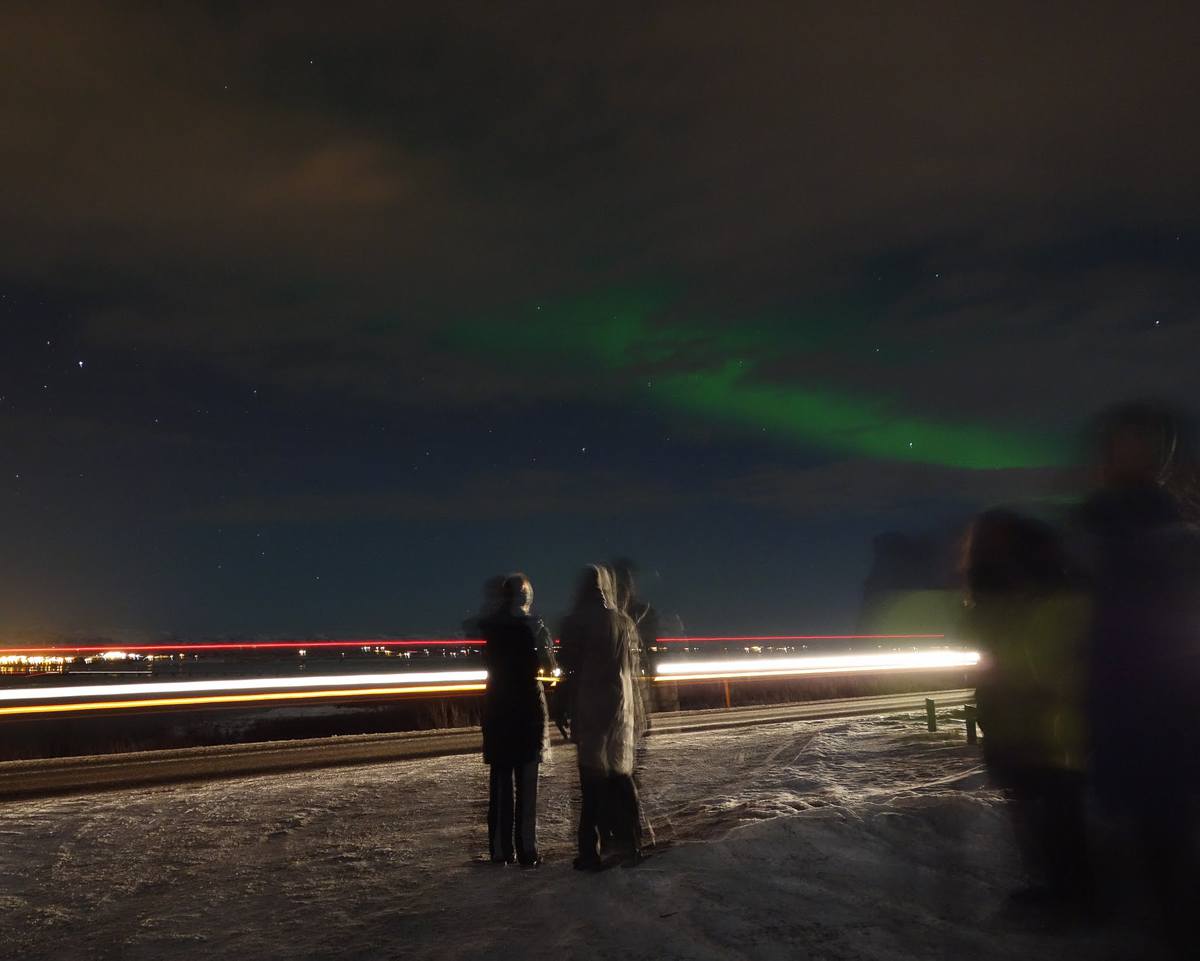
Back at Vassar, Quade is well into the planning of next year’s Iceland trip, reserved for the class of 1969. Schneiderman will be returning as group leader, along with Bob Rebelein, Associate Professor of Economics. On their agenda: snorkeling in Thingvellir’s lake. Girded with long johns and wetsuits, it won’t be too cold. “The chance of swimming in a mid-oceanic rift zone is too good to pass up,” Schneiderman says. “The class of ’69 should go get their long underwear!”
